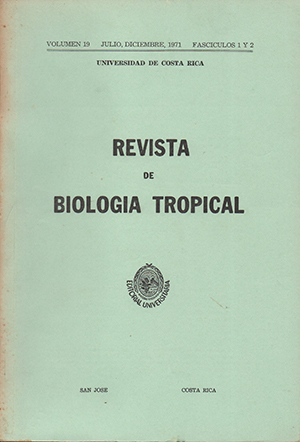Abstract
A small breeding population of the butterfly Battus polydamus polydamus Linnaeus was studied at a tropical dry forest site in northwestern (Guanacaste Province), Costa Rica, from March through June, 1970. Life history, adult population size, adult turnover, adult dispersal, breeding behavior, territorial behavior and biotic mortality in larval populations were studied. It was condud ed that the apparent patchy distribution of the larval foodplant (Aristolochia vines) results in a very patchy distribution of breeding populations of this but terfly; low vagility, high adult survivorship and localized breeding interactions at the larval foodplant account for the apparent high population cohesiveness in this species, despite high levels of parasitism during the larval stage. Males eclose before females and establish "territories" at the breeding site and adult numbers remain consistent over long periods of time. The latter is believed to be a result of high adult survivorship (from predation by birds), with low mor tality associated with old age being counterbalanced with low recruitment of new adults to the population. The relation of such a population structure to mimicry theory is also discussed.##plugins.facebook.comentarios##
Downloads
Download data is not yet available.






